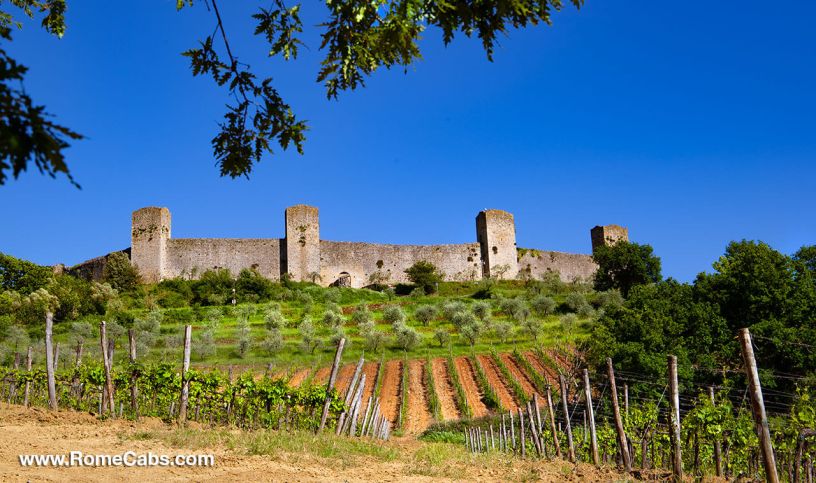Buongiorno and welcome to RomeCabs travel blog!
Tuscany, with its enchanting landscapes, medieval hilltop villages, delectable cuisine, and an atmosphere perfect for experiencing La Dolce Vita in Italy, awaits your exploration.
Among the many medieval hilltowns in Tuscany adorned with fortified defensive walls from the tumultuous Middle Ages, Monteriggioni stands out as a true medieval masterpiece. Unlike others, Monteriggioni is not just a village; it is an entirely fortified fortress, surrounded by enduring stone walls that have weathered the ages. Beyond a simple stroll through cobblestone streets, Monteriggioni offers a journey into history and an ideal stop on any Tuscany tour.
.
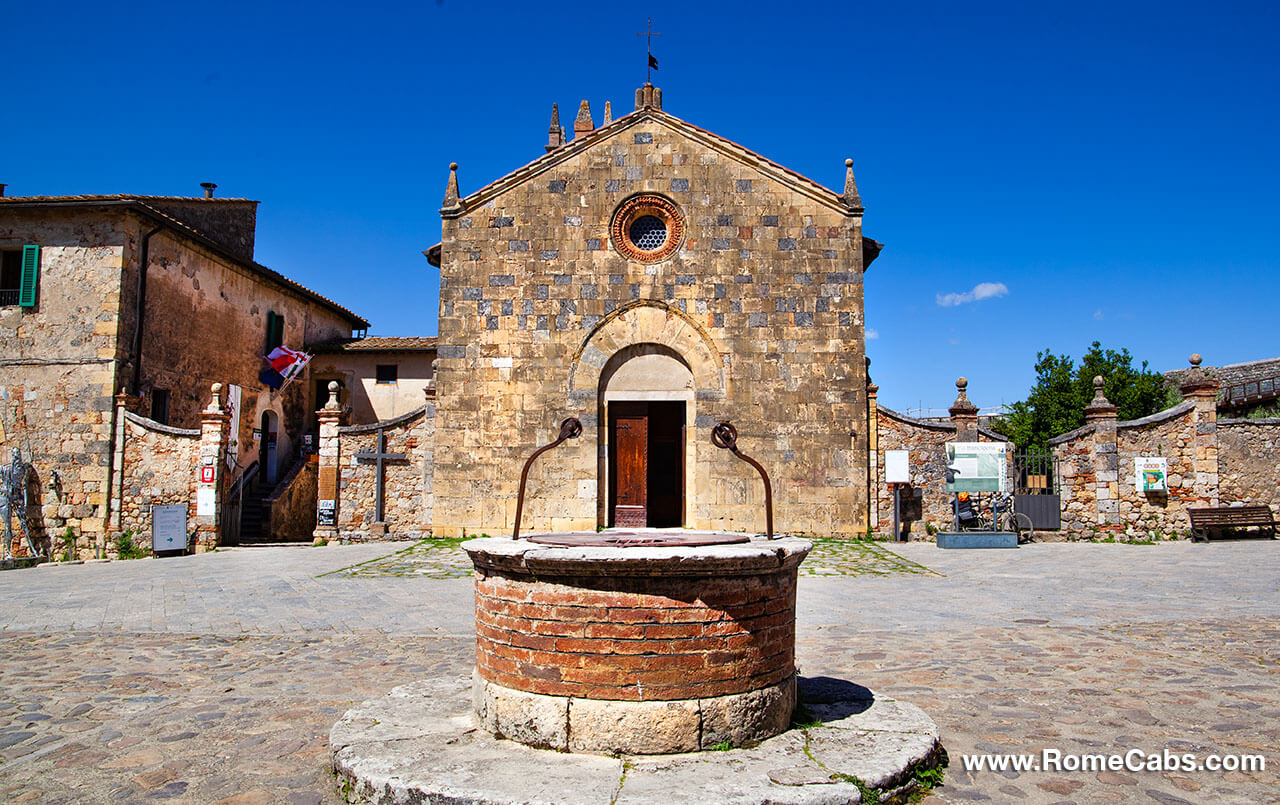
.
Monteriggioni’s Medieval Origins
Built during the early 13th by the Sienese on the orders of Guelfo da Porcari, Monteriggioni served as a strategic defensive point for the Republic of Siena. Perched on Mount Ala, the fortress provides a privileged vantage point, offering panoramic views of the surrounding landscape and safeguarding the Via Francigena, a major medieval pilgrimage route from Canterbury to Rome.
Monteriggioni holds a special place in the history of the Via Francigena, the ancient route that connected Northern Europe to Rome. Pilgrims and crusaders, en route to the Holy Land, made a stop at Monteriggioni, leaving behind architectural gems like the Pieve di San Giovanni Battista. This sacred building in Ponte allo Spino, dating back to 1189, unveils the religious significance of Monteriggioni on this historic pilgrimage.
.
Monteriggioni’s Fortified Medieval Walls
.
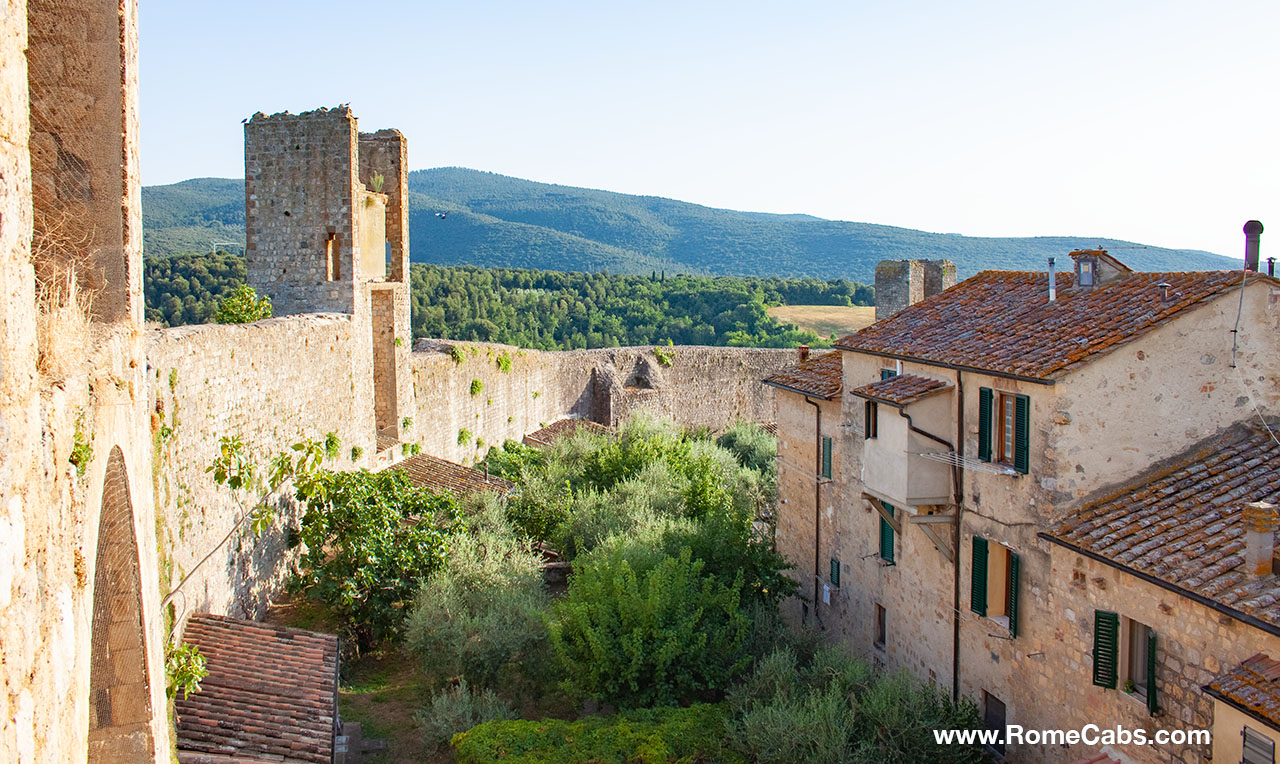
.
The city walls, a masterpiece of military architecture, extend 570 meters, dating back to 1212 and reinforced in 1270. One of the gates, the Porta Fiorentina opens north toward Florence to the north, and the other, the Porta Romana, opens south towards Rome. Its primary purpose was clear – to serve as a defensive outpost, safeguarding the northern borders of Siena against potential invaders.
The village’s history is woven with tales of conflict and conquest. During the 14th century, it bore witness to clashes between Siena and Florence, two powerful city-states vying for dominance in the region. Monteriggioni’s imposing walls proved to be a formidable deterrent, but its fate would eventually be shaped by the ever-changing tides of political alliances and power struggles.
Monteriggioni’s most striking feature is undoubtedly its well-preserved circular walls. Encircling the village like a protective embrace, these walls were ingeniously designed by the architect Buoninsegna to be both imposing and aesthetically pleasing. The fortress boasts 14 watchtowers, each standing like a sentinel along the perimeter, contributing to the village’s impregnability.
Poet Dante Alighieri immortalized these walls in his “Inferno,” comparing them to giants in his epic poem “Divine Comedy“.
As with circling round
Of turrets, Monteriggioni crowns his walls;
E’en thus the shore, encompassing the abyss,
Was turreted with giants, half their length
Uprearing, horrible, whom Jove from heaven
Yet threatens, when his muttering thunder roll
.
Today, the medieval walls serve another purpose: a breathtaking panorama that unfolds before your eyes. The rolling hills of Tuscany stretch as far as the eye can see, an undulating sea of green and gold. The view not only reinforces the village’s strategic advantage but also connects you to the timeless beauty of the Tuscan landscape that has inspired poets and painters throughout the ages.
.
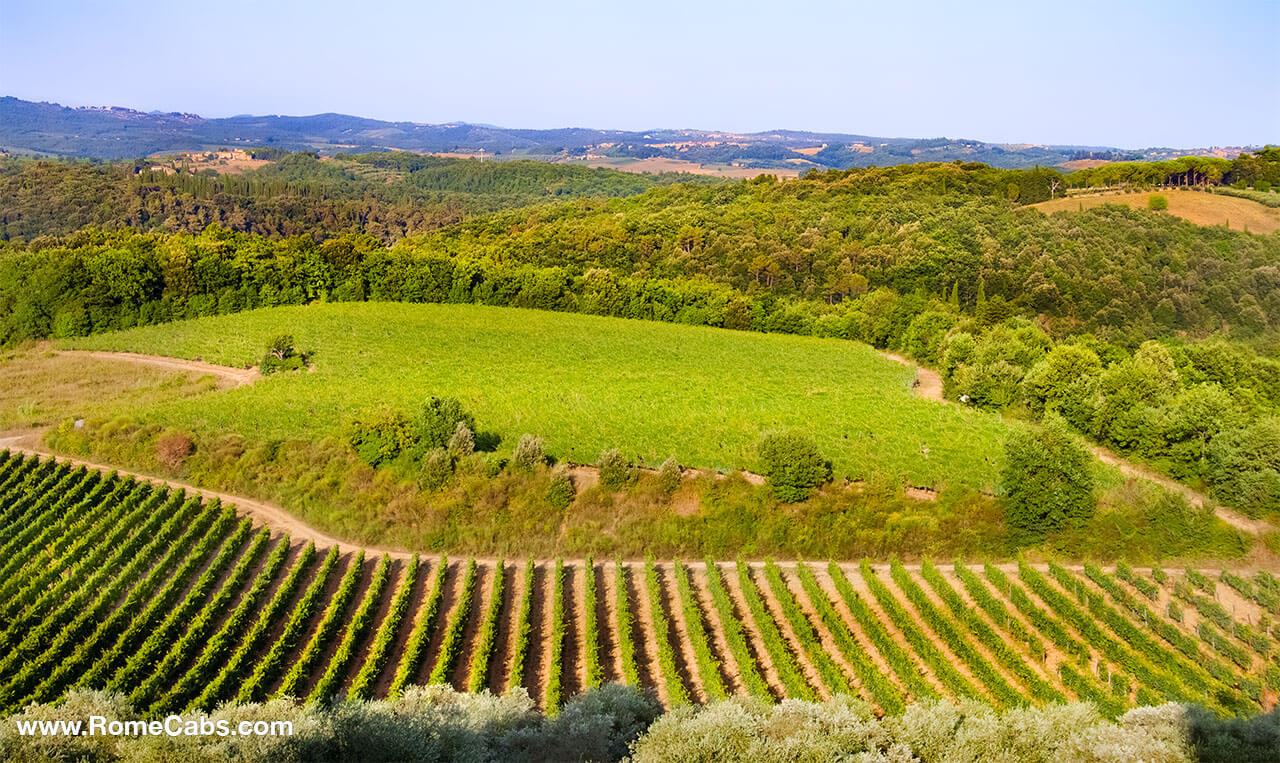
.
What to see and do in Monteriggioni
As you traverse the cobblestone streets, notice the meticulous arrangement of houses within the walls. Monteriggioni’s urban layout reflects the medieval concept of harmony and order, with structures tightly packed to optimize defense while providing a sense of community. Some Renaissance-style buildings that once belonged to members of the upper class, face the central piazza, Piazza Roma, a focal point for social gatherings and markets, exudes an authentic medieval ambiance.
Climb the spiral staircases within the towers, and you’ll find yourself transported to an era where knights stood guard, ever watchful for approaching adversaries. The strategic placement of these towers not only served a defensive purpose but also provided commanding views of the surrounding countryside.
.
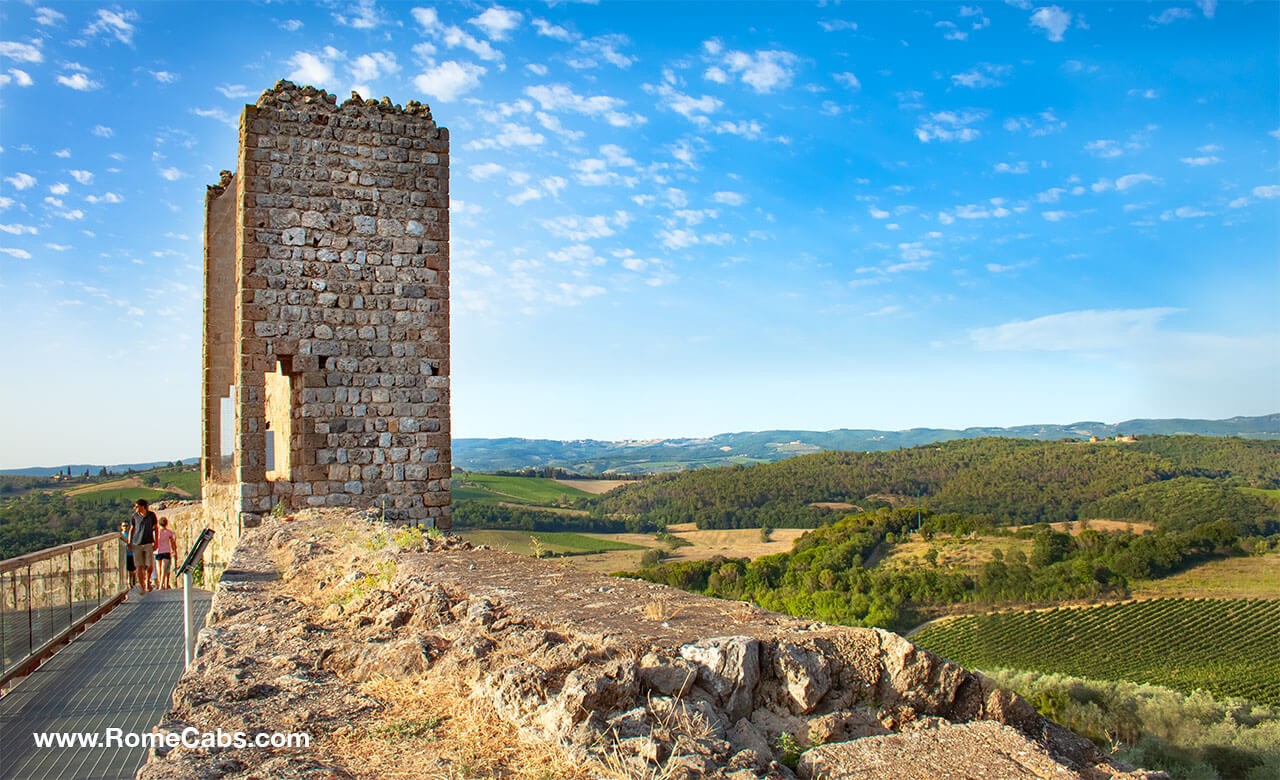
.
The central square of Monteriggioni, Piazza Roma, is surrounded by charming medieval buildings that house cafes, restaurants, wine shops, and delightful boutiques. It’s a perfect spot to relax, enjoy a coffee, enjoy some wine tasting, and soak in the historic atmosphere.
The square is also home to the town’s Tourist Office, the Arms Museum, and the Church of Santa Maria Assunta. The Museo di Monteriggioni In Arme provides a deep dive into the town’s history, displaying historical monuments and siege techniques.
.
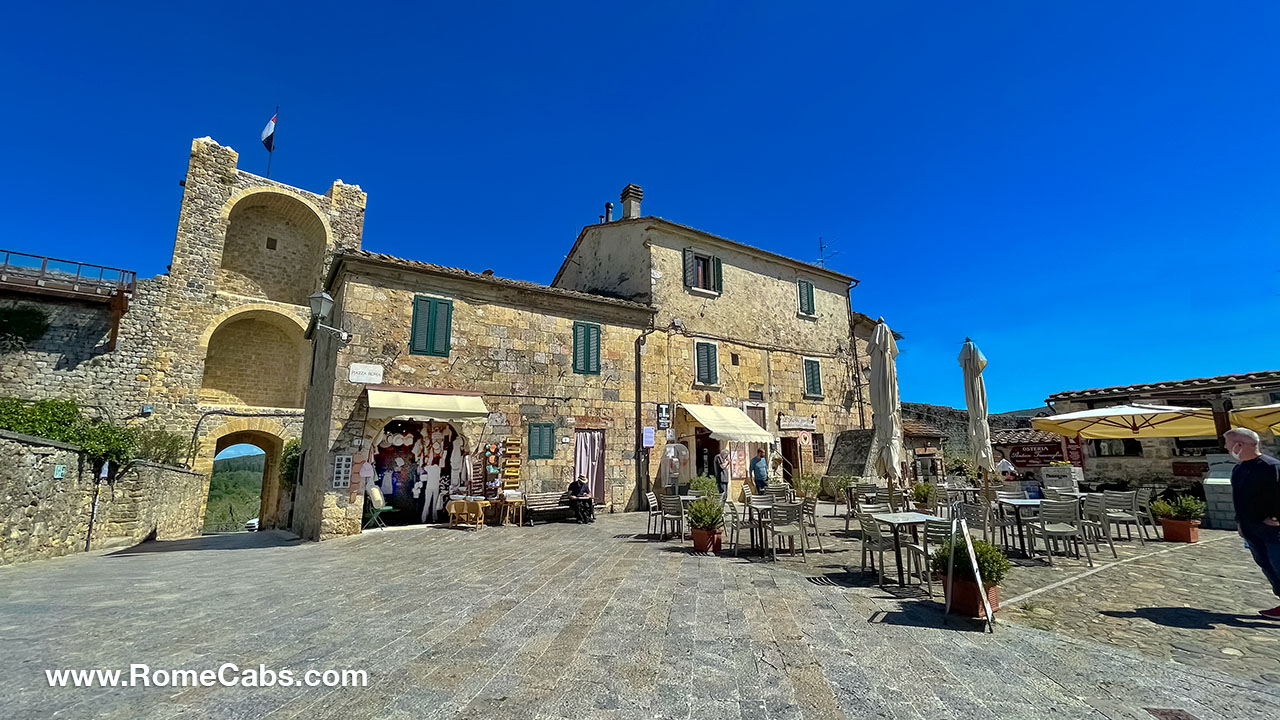
.
Immerse Yourself in Monteriggioni’s Events
Despite its size, Monteriggioni hosts a myriad of events. The annual Medieval Festival in July stands out, offering a week-long celebration of history, culture, food, and wine. Experience the town’s vibrant spirit as citizens don period costumes, creating a colorful parade and immersing visitors in Monteriggioni’s centuries-old history.
.
Beyond Monteriggioni: Hermitages and Wineries
Venture beyond Monteriggioni to discover nearby hermitages like San Leonardo al Lago, an ancient hermitage graced with frescoes dating back to 1119. Nestled in the serene landscape, this Augustinian hermitage offers a glimpse into the spiritual practices of centuries past. The frescoes within tell stories of devotion, creating an atmosphere of tranquility that transports visitors to a bygone era.
Explore the Pieve di Santa Maria a Castello, an architectural gem that stands as a symbol of Siena’s rich heritage. This church, restored in the 19th century, bears witness to the history and disputes surrounding property exchanges with the Catholic Church. Visitors can explore its modernized yet captivating interior, where the baptistery of St John the Baptist adds to the historical tapestry.
For those seeking a profound pilgrimage experience, the Abbey of Saints Salvatore and Cirino awaits. Positioned along the Via Francigena, this abbey held special significance for medieval pilgrims journeying to Rome. A basilica with three naves, it houses an array of art, including a Madonna fresco, a baptismal font, and the Assumption of the Virgin. The sacred museum within the abbey transports visitors through the religious history of the region.
.
ALSO READ: Traveling to Italy this summer? Don’t forget to bring THESE with you
.
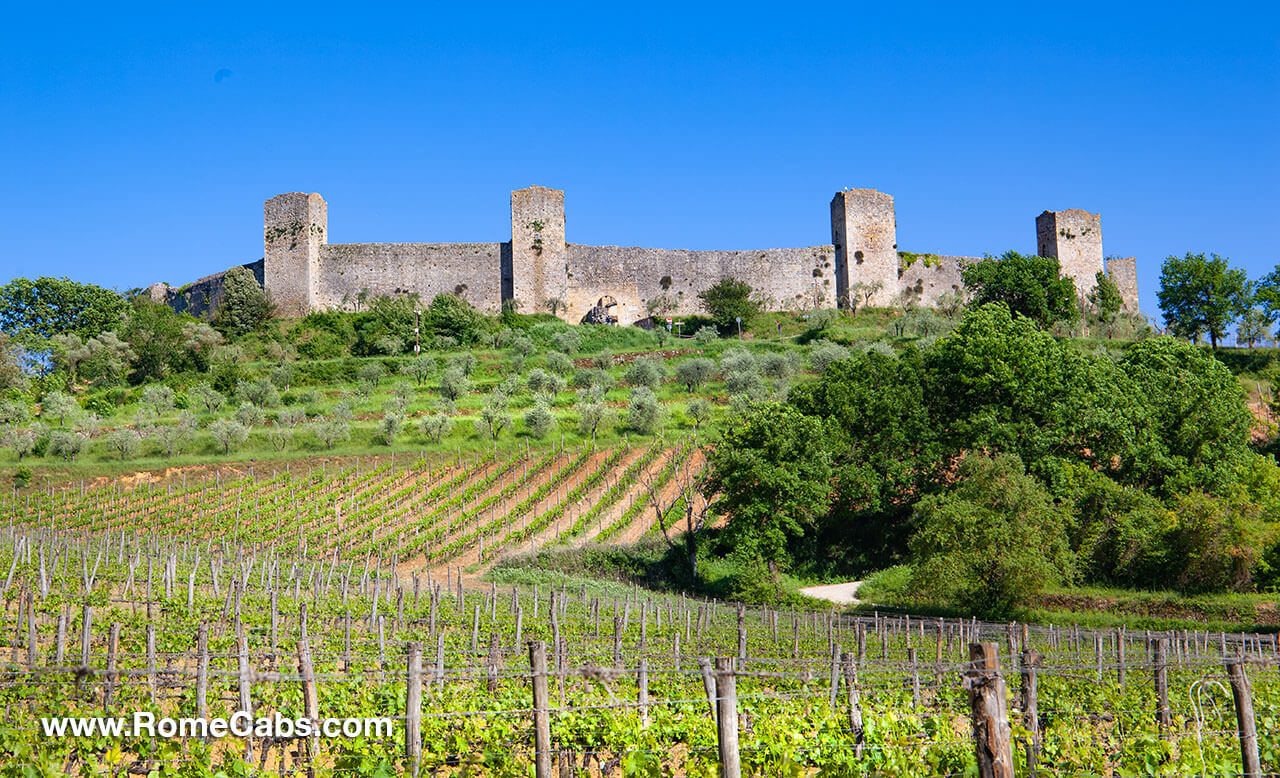
.
Wineries and Vineyards: Tasting the Essence of Tuscany
No visit to Tuscany is complete without savoring its world-renowned wines. In the heart of Monteriggioni’s surroundings, discover local wineries that offer a sensory journey through the region’s terroir. Casa Vinicola Bartali, among others, stands as a testament to Tuscany’s winemaking prowess. Indulge in the flavors of Brunello, Chianti, Vernaccia, and Vecchia Corona wines, each sip capturing the essence of the picturesque landscapes.
.
ALSO READ: TOP 7 ROME AND ITALY TRAVEL TIPS
.
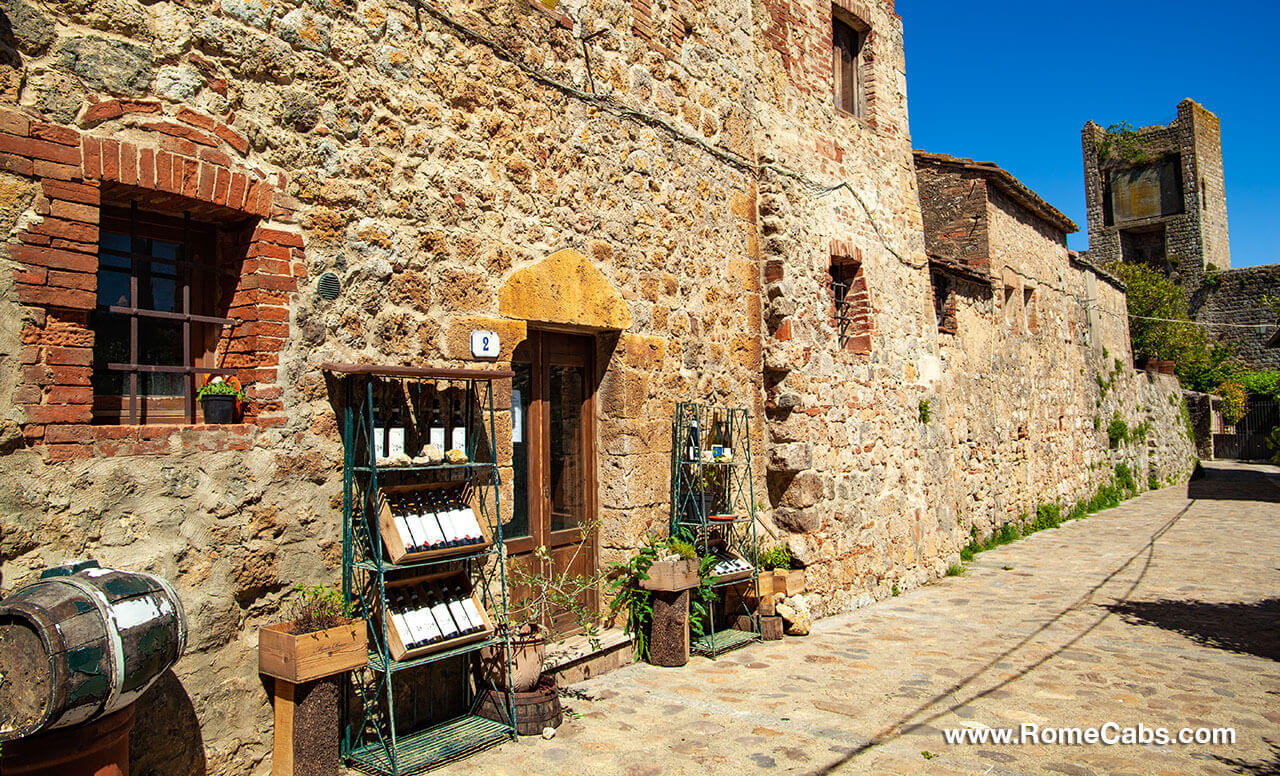
.
In Monteriggioni, every stone, every arch, and every tower whispers tales of a bygone era. It invites you to envision a medieval world where honor, chivalry, and the pursuit of noble ideals were eternally woven into the fabric of daily life.
On your next trip to Italy’s Tuscany region, be sure to include Monteriggioni in your trip itinerary and Tuscany Tours, and imagine the stories that these ancient walls long to tell. If you will be staying in Rome, find out the Top 5 Tuscany Tours from Rome and Best Reasons to book private tours in Italy.
Thank you for reading our travel blog “Monteriggioni: A Must-See Medieval Fortified Village in Tuscany, Italy“. We look forward to seeing you in Italy!
